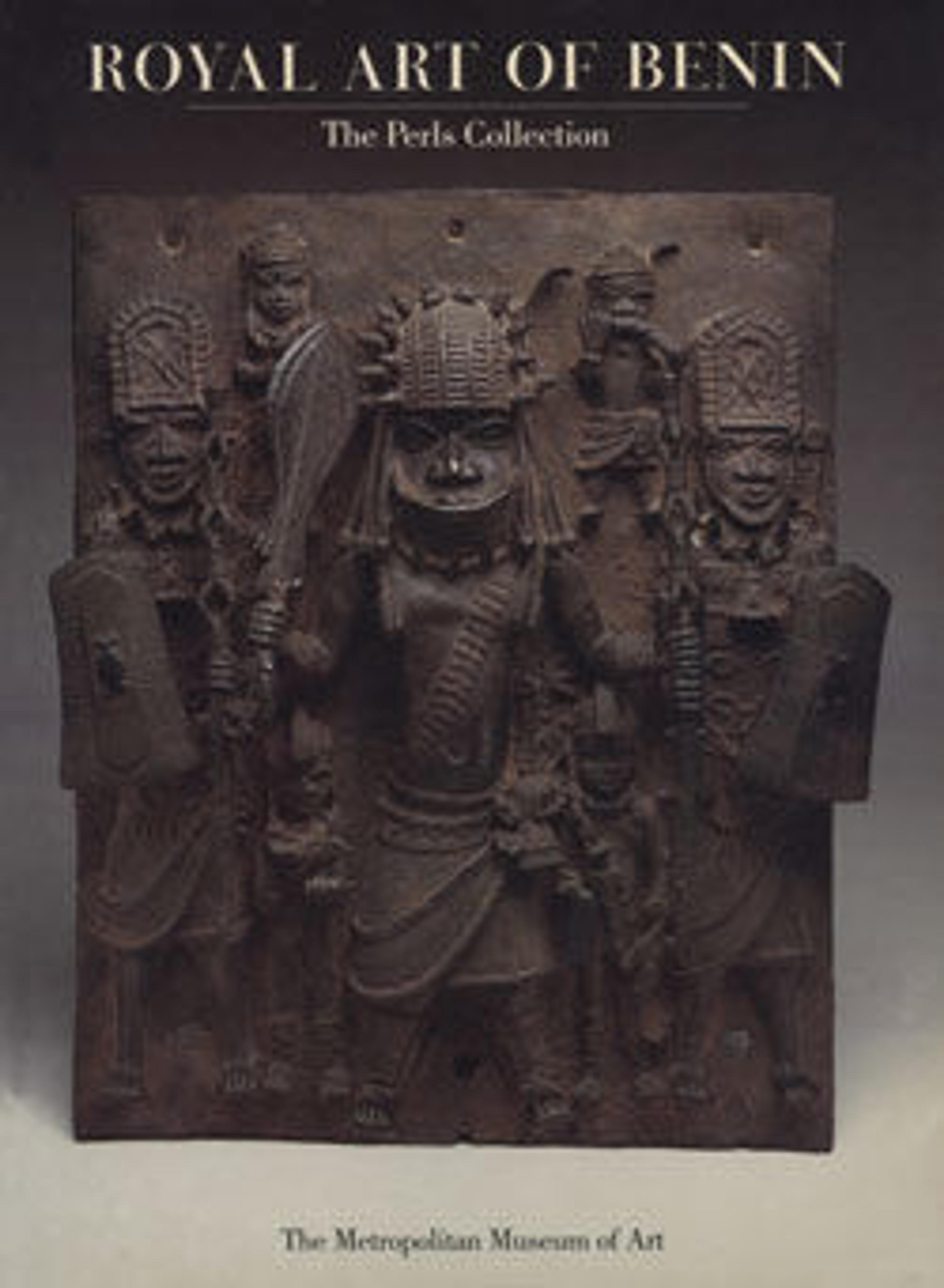Udàmalóre (ceremonial sword)
This opulent ivory sword is an udamalore, literally a "sword of the well-born." It was carried by a high-ranking chief of Owo, a Yoruba state in present-day Nigeria that rose to regional power in the eighteenth century. Worn on the hip, it indicated the power and status of its bearer at public ceremonies and celebrations.
Consisting of a figurative handle and a curved, openwork blade, this udamalore is a stunning example of the works created at this celebrated ivory-carving center. The human head that constitutes the pommel displays a delicate coiffure of repeated chevrons, while the eyes are augmented with dark inlaid wood. The solid base of the blade is decorated with two knot patterns, while the openwork section depicts an Owo chief in ceremonial dress, wearing his own udamalore horizontally on the left hip. The space around the figure is pierced, but the sword's gently curved outline is maintained by delicate bands of ivory. In his right hand, the chief holds a curved sword, while a bird perches on his left hand and pecks at his crown. The upraised sword is an uda, used in combat, while the bird refers to the protective spiritual power associated with elderly Yoruba women. In combination, these emblems suggest a ruler who is physically and spiritually equipped to face all the challenges he may confront.
Consisting of a figurative handle and a curved, openwork blade, this udamalore is a stunning example of the works created at this celebrated ivory-carving center. The human head that constitutes the pommel displays a delicate coiffure of repeated chevrons, while the eyes are augmented with dark inlaid wood. The solid base of the blade is decorated with two knot patterns, while the openwork section depicts an Owo chief in ceremonial dress, wearing his own udamalore horizontally on the left hip. The space around the figure is pierced, but the sword's gently curved outline is maintained by delicate bands of ivory. In his right hand, the chief holds a curved sword, while a bird perches on his left hand and pecks at his crown. The upraised sword is an uda, used in combat, while the bird refers to the protective spiritual power associated with elderly Yoruba women. In combination, these emblems suggest a ruler who is physically and spiritually equipped to face all the challenges he may confront.
Artwork Details
- Title:Udàmalóre (ceremonial sword)
- Artist:Ijebu-Yoruba artist
- Date:17th–18th century
- Geography:Nigeria, Ijebu-Owo
- Culture:Yoruba
- Medium:Ivory, wood or coconut shell inlay
- Dimensions:W. 5 × D. 2 × L. 19 1/4 in. (12.7 × 5.1 × 48.9 cm)
- Classification:Bone/Ivory-Implements
- Credit Line:Gift of Mr. and Mrs. Klaus G. Perls, 1991
- Object Number:1991.17.122
- Curatorial Department: The Michael C. Rockefeller Wing
More Artwork
Research Resources
The Met provides unparalleled resources for research and welcomes an international community of students and scholars. The Met's Open Access API is where creators and researchers can connect to the The Met collection. Open Access data and public domain images are available for unrestricted commercial and noncommercial use without permission or fee.
To request images under copyright and other restrictions, please use this Image Request form.
Feedback
We continue to research and examine historical and cultural context for objects in The Met collection. If you have comments or questions about this object record, please contact us using the form below. The Museum looks forward to receiving your comments.
